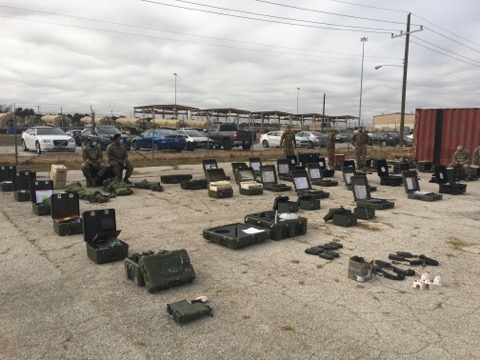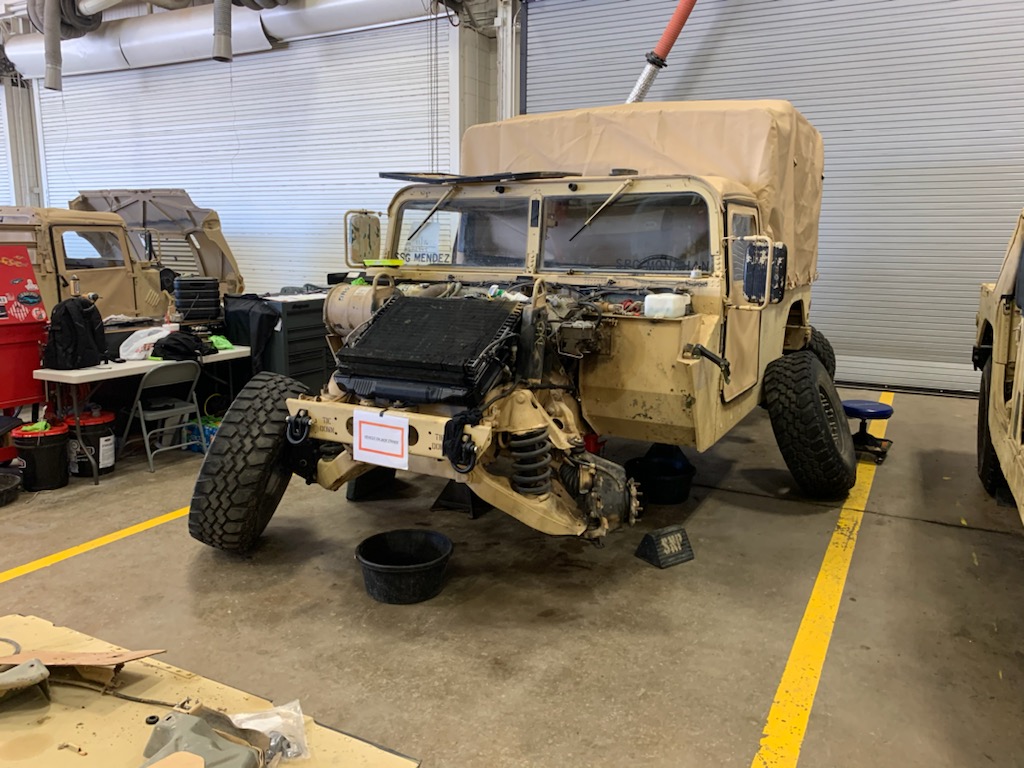WHAT is MDRS?
MDRS is the Army’s initiative to set conditions for a transition to the Regionally Aligned Readiness & Modernization Model (ReARMM). Ultimately this effort will enhance the ability to support specific missions and theaters by creating a predictable environment for modernization. Key to modernization is examining and evaluating current fleets of equipment to determine whether these fleets, or specific platforms within them, should be retained, repaired or divested.
MDRS has three lines of effort:
1. Get rid of unit excess equipment.
2. Increase readiness in the Army through lateral transfers of equipment.
3. Turn in unserviceable equipment to the various Army depots for repair.
Another key feature of the MDRS program is to increase the speed or velocity with which each of these lines of effort is executed. In the proof of purpose effort at Fort Hood, the MDRS increased velocity by over five times the previous All Army Excess throughput. As MDRS expands and refines its processes, that speed should improve even more.
Who is or will be affected?
The MDRS supports redistribution and divestiture of active duty units. ASC will share best practices and tactics, techniques and procedures with US Army Reserve (USAR) and Army National Guard Bureau (ARNGB) units so they can establish their own MDRS sites, if desired.
When will this program be launched?
A proof of purpose was launched at Fort Hood, TX, in November 2020, which showed the success of the MDRS concept. On 1 Feb 2021, ASC presented the results of the Fort Hood MDRS to the AMC Commanding General (CG). Based on the positive results achieved, the CG directed the expansion of the MDRS concept simultaneously with an Initial Operational Capability (IOC) of 1 March 2021 and a Full Operational Capability (FOC) of 1 April 2021.
Where will MDRSs be located?
MDRSs will be established at the following locations, overseen by the resident Army Field Support Battalion (AFSBn) and Logistics Readiness Center (LRC):
- Fort Bragg, NC
- Joint Base Lewis-McChord, WA
- Fort Stewart, GA
- Fort Bliss, TX
- Fort Drum, NY
- Fort Carson, CO
- Fort Campbell, KY
- Fort Riley, KS
- Schofield Barracks, HI
- Joint Base Elmendorf-Richardson, AK
- Fort Polk, LA
- Fort Irwin, CA
- Fort Benning, GA
Each AFSBn and LRC is in the process of identifying resource and manpower requirements, hiring personnel to support the MDRS and establishing physical holding yards in order to meet IOC and FOC deadlines.
How will MDRS work?
Headquarters, Department of the Army Execute Order (EXORD) 299-20 established the MDRS proof of purpose at Fort Hood and detailed its execution in broad outline. Based on the assessment of the Fort Hood MDRS, a fragmentary order (FRAGO) will be published in the near future codifying business rules and key roles and responsibilities. While there might be minor differences among the various sites, the key to program success is standardized business rules, providing clear guidance and standards for units processing equipment through their respective MDRS.
 MDRS Induction Inventory
MDRS Induction Inventory
Photo Courtesy of Ft. Hood, TX MDRS Team
Why MDRS?
The simple truth is that the Army has too much excess and misaligned equipment. Modernization depends on getting rid of what’s not needed, aligning equipment where it most appropriately supports mission accomplishment and getting deadlined or non-mission capable equipment repaired and transferred.
 MDRS Maintenance Shop HMMWV
MDRS Maintenance Shop HMMWV
Photo Courtesy of Ft. Hood, TX MDRS Team
Perhaps most important of all is speed. Previous programs focused on the same tasks as MDRS but without a unified and consistent approach meant to optimize velocity.
As the MDRS effort unfolds, PS Magazine will provide updates, tips and guidance to ensure units are fully ready to navigate the program successfully, thereby ratcheting up velocity even more. So visit this site often!